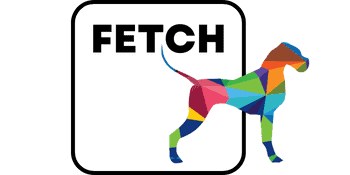
The role of social media in consumer purchase decisions
Reading Time: 4 minutesIn today’s digital age, understanding how social media influences consumer purchase decisions is crucial for marketers. Our latest blog explores this impact and looks at how you can leverage social media psychology for success.
Despite the varied nature of social media users, companies invest considerable resources in understanding the digital pathways that lead to a purchase. And rightly so. By tapping into the emotions and social interactions that drive online behaviors, businesses can connect with potential customers on a deeper level and unlock new opportunities for engagement and sales.
However, success requires navigating both digital psychology and social media analytics – individual preferences, community influences, diverse user behaviours and more. And while this may seem daunting, it is essential if businesses are to truly understand the social media pathways that lead to purchases.
So what are the psychological factors influenced by social media?
Social media shapes our buying decisions through key psychological factors, including:
Long-term vs. Short-term Engagement
On social media, consumers exhibit two distinct mindsets: one seeking long-term value and connections, and the other desiring immediate engagement and gratification. Balancing content and interactions to cater to both can enhance the consumer journey from casual browsing to decisive action.
Fundamental Needs Within Digital Communities
Three fundamental needs drive us: wealth, health, and relationships. On social media, these translate into a quest for financial advice, wellness tips, and community belonging. Tailoring your content to address these core desires can significantly boost your appeal and relevance.
From Broad Markets to Niches on Social Platforms
Just as in traditional markets, social media audiences’ segment into niches with specific interests. Identifying and targeting these niches allows you to craft more personalised and effective marketing strategies.
Learning and Engagement Through Social Media
The journey to a purchase on social media follows a path of discovery, consideration, and action. Content that educates, engages, and encourages trial can transform passive observers into active participants and, eventually, into buyers.
Emotional Connections and Social Proof
Emotions and social validation play pivotal roles in purchase decisions on social media. Stories that resonate emotionally and content that showcases community endorsement can significantly influence buying behaviour.
The Power of Social Narratives
Crafting compelling stories that connect with your audience on a personal level can bridge the gap between interest and purchase. These narratives should highlight relatable experiences, challenges overcome, and the journey towards achieving goals, making your brand more relatable and trustworthy.
Scarcity and FOMO (Fear of Missing Out)
Leveraging the psychological principles of scarcity and the fear of missing out can encourage quicker decision-making. Highlighting limited time offers and exclusive deals on social media can create a sense of urgency among your audience.
The Bandwagon Effect
Social media amplifies the bandwagon effect, where people are influenced by the actions of others. Showcasing widespread acceptance and popularity of your products through user-generated content, reviews, and endorsements can sway potential buyers to join in.
Leveraging social media psychology for success
Understanding the psychology of social media users offers valuable insights into what drives consumer purchase decisions, and by undertaking a thorough review of your own data and analytics you can improve marketing strategies, connect more effectively to your audience and influence their purchasing behaviour. Below are a range of approaches that can adopted to help leverage success:
Analyse Audience Psychology:
Invest in social media analytics tools to understand the emotional and psychological triggers of your target audience. This helps tailor your content and campaigns to better meet their needs and desires.
Segment Your Audience:
Identify and focus on specific niches within your broader market. Use targeted advertising and tailored content to speak directly to these groups, enhancing relevance and engagement.
Develop Emotional Content:
Create content that emotionally resonates with your audience, using storytelling that highlights relatable experiences and the journey of overcoming challenges. This can build a deeper connection and trust towards your brand.
Utilise Social Proof:
Regularly share user-generated content, customer testimonials, and expert endorsements to leverage social proof. This helps build credibility and can influence potential buyers by showing the popularity and reliability of your products and services.
Promote Exclusive Offers:
Use scarcity tactics and time-sensitive deals to create urgency. Highlight these promotions prominently on your social media channels to tap into the fear of missing out (FOMO) among your audience.
Take a Long and Short-term Approach:
Balance your content to cater to those looking for immediate gratification as well as those seeking long-term value. This could mean mixing quick tips and promotions with in-depth guides or community discussions.
Focus on Fundamental Needs:
Tailor your content to address the fundamental needs of wealth, health, and relationships. For instance, financial brands could offer money-saving tips, wellness brands could provide health advice, and community-oriented brands could facilitate discussions and connections.
Encourage Interaction and Learning:
Design your content to educate and engage. Interactive posts, live videos, webinars, and Q&A sessions can help transform passive followers into active participants and buyers.
Craft Compelling Narratives:
Develop stories that not only highlight product and service benefits but also weave in elements of personal achievement or improvement that your audience can aspire to.
Monitor and Adapt Based on Feedback:
Keep an eye on how your audience reacts to different types of posts and campaigns. Use this feedback to continuously adapt and improve your strategies.
Leverage Bandwagon Effects:
Showcase the widespread acceptance and popularity of your products. This could be through sharing metrics of how many people have bought a product, “most popular” lists, or visual content featuring multiple customers using your product.
–
At Fetch, we specialise in harnessing the power of social media psychology to craft marketing strategies that resonate with your audience and positively impact consumer purchase decisions. Contact us to explore how we can elevate your social media presence and drive sales.
Post a Comment
You must be logged in to post a comment.





